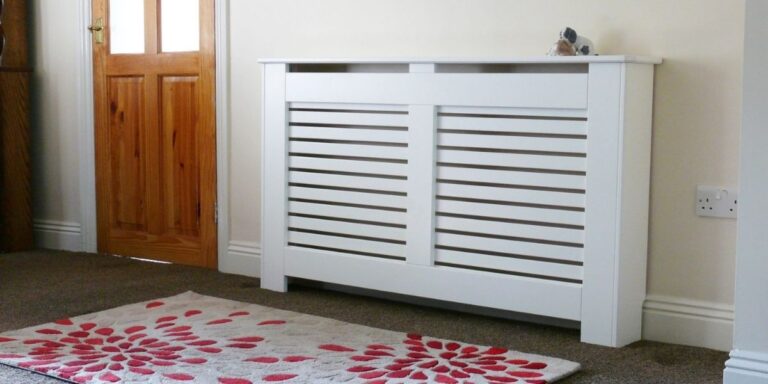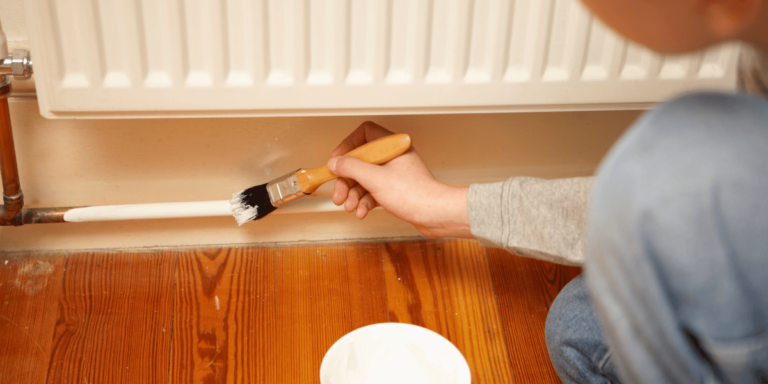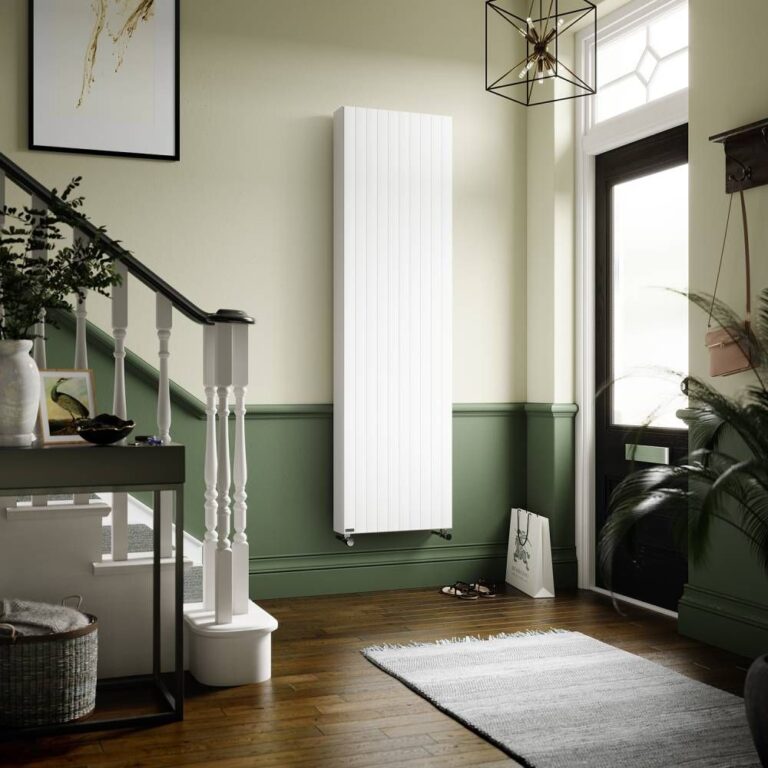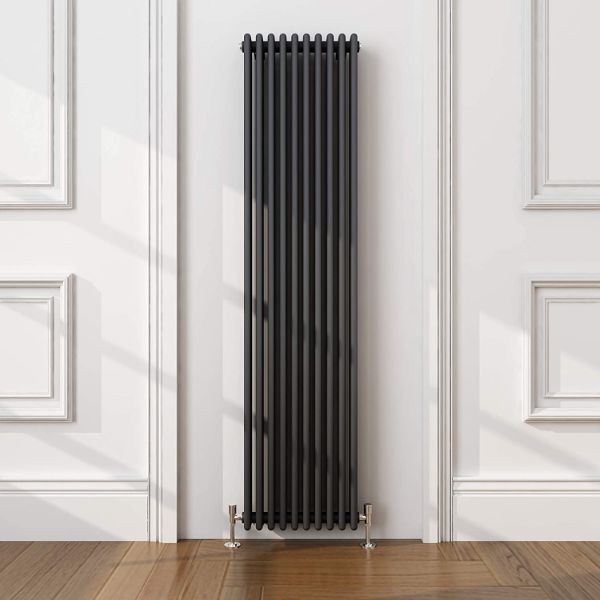In this article, we’re going to give you a step-by-step guide on how to paint your radiator. We’re also going to answer some of the most searched questions when it comes to this topic, giving you in-depth answers.
Should you remove your radiator before painting it? What paint should you use to paint your radiator? What brush should you buy to paint your radiator? We’ll put to rest these questions plus a couple more — so, stick around and read on.
Why Should You Paint Your Radiator?
Some radiators are, to put it bluntly, huge gigantic eyesores that stick out like a sore thumb. Right there, in the middle of our room, messing with our Feng Shui — or what your preferred decorative trend is.
They are practical features that lack any type of stylish magic. Blunt, metal, sometimes rusting monstrosity. Thankfully, the DIY society, and plucky Instagram, Pinterest, and Houzz influencers have come to our rescue, offering rather ingenious designs and artistic paint jobs for radiators. So much so, that pairing a radiator has become increasingly popular these past few years.
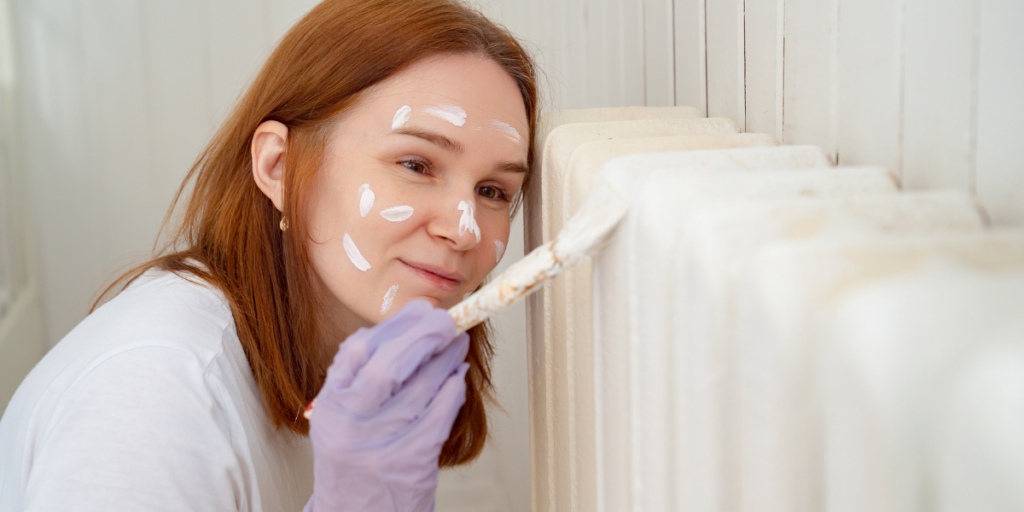
If your radiator is still running smoothly, getting rid of all those pesky cold spots, then there’s really no need to go out and buy a fancy new model. A couple of brush strokes can truly bring a, and pardon the pun, a fresh coat of paint to the whole thing, gifting you with a stand-out decorative feature in a room.
Whether you’re looking to make your radiator match the background or turn it into an artistic piece that draws the eyes. Painting your radiators and doing it properly is something anyone can do. All you really need is a bit of creativity, some inspiration, and the proper paint. If you don’t mind bending and putting a bit of elbow grease into the process then painting a radiator is not only surpassingly cheap but equally simple.
How to paint your Radiator — A step-by-step guide.
Tools you’ll need to paint your radiator.
Every good recipe needs an ingredients section, and painting your radiator is a great DIY recipe. Here’s a shortlist of what you’ll need before you march headlong into this project.
- Various paintbrushes of various sizes. Sure, you could use 1 solitary, all-purpose brush, but if you can afford it buy a pack — one with different sizes.
- Radiator primer.
- Radiator heat-resistant paint, tinned or aerosol.
- Sandpaper.
- Something to protect the floor from paint; old sheets, newspaper, plastic wrapping, etc.
- Paint pants and paint shirt — there’s a good chance you’re going to get messy, so you might as well prepare.
Preparing your radiators for painting.
It’s important to clean your radiator thoroughly before you apply the first brush stroke.
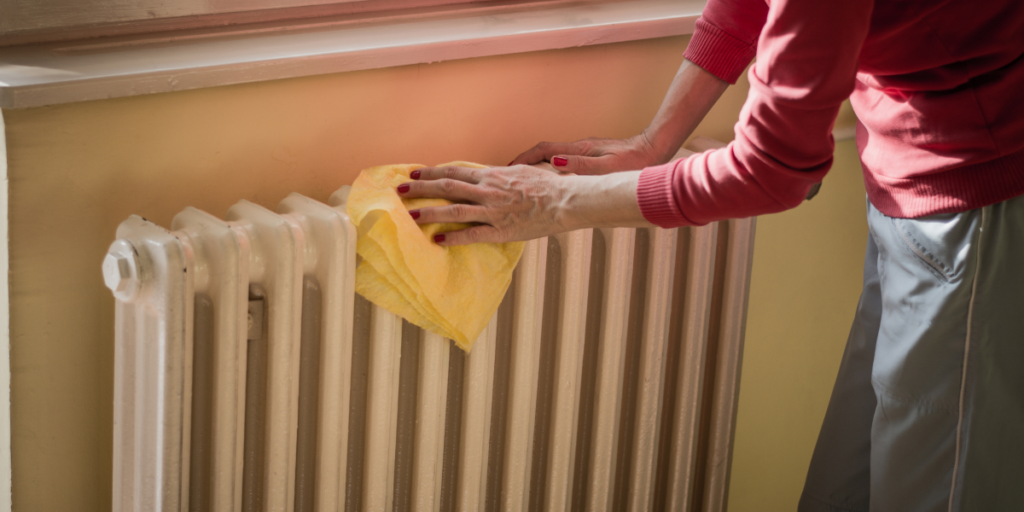
In order to do this follow the simple steps:
- Turn your radiator off and allow it to cool off for a couple of hours. This will prevent you from buying yourself. This will also halt the radiator’s natural inclination, due to convection currents it creates while in operation, to draw in more dust.
- Vacuum the radiator. With your vacuum cleaner’s many houses and nozzles go to town on your radiator. Clear out as much dust as you can.
- Clean inside your radiator. Use a brush and scrape those hard-to-reach places. You can solo use a long piece of wire or an unraveled coat hanger and attach a cleaning sheet to it.
- Clean the outside of your radiator. Mix some liquid soap in a bucket of hot water and mix it until it’s foamy enough. Afterward, use a sponge, wring out the excess water and wipe down your radiator, including the valves and pipework.
- Clean around your radiator. We’re betting that the walls and area around your radiator are either a bit smoked, scorched, or just plain dirty, this is the best opportunity you’ll have to give them a proper scrub.
11 Steps to paint your radiators:
- Turn off your radiator.
- Ventilate the room.
- Wait for Radiator to cool off.
- Remove your radiator from the wall (optional)
- Clean your radiator.
- Prepare your painting area.
- Sand down your radiator.
- Prime your radiator.
- Apply the first coat of paint to your radiator.
- Let the first coat of paint dry out.
- Apply another coat of paint if necessary.
1. Turn off your radiator
It might seem obvious but you have no idea how many people forget. It’s important to turn off your radiator by turning your thermostatic valves clockwise so it doesn’t collect more dust. Also, so you don’t burn yourself while painting it.
2. Ventilate the room
It’s important to paint in a well-ventilated room for two distinct reasons. First, some of the paint fumes are toxic and might make you sick. Secondly, if the room is too hot your radiator, particularly if it’s an iron one, will conserve some of the heat and your paint won’t stick to it as easily. Ventilating a room will help your radiator cool down.
3. Wait for the radiator to cool off
Don’t even start your project until your radiator is ice cold, or at the very least at room temperature. Wait for a couple of hours.
4. Remove your radiator
As we said, this makes painting your radiator that much easier. It’s not a do-or-die scenario, but it really helps. Also, if you’re using spray paints it’s better to remove your radiator from the wall otherwise you’re bound to make a huge mess.
5. Clean your radiator
This is critical. Follow the steps described above to knock this step out of the part. We do have a full guide on how to clean your radiator though which is much more in-depth.
6. Prepare your painting area
Markdown a two-meter splash zone around your radiator and use old sheets, plastic wraps, newspapers, or whatever you have handy to cover it. No matter how careful a person you might be, there’s also a chance of paint dripping down and ruining your floor or your furniture.
7. Sand down your radiator
Use sand-paper to smooth the surface of your radiator down. This will help get rid of lumps, rust, and make your paint stick evenly.
8. Prime your radiator
No matter what paint you’re using, emulsion, heat-resistant, spay, it’s important to prime your radiator with an even coat. This will help you paint to bond better to the surface. It also helps stop rust spots and protects against future corrosive problems.
9. Apply the first coat of paint to your radiator
Use your brushes or your spay can to apply the first coat of paint. Take your time to evenly cover your whole radiator. Make sure to avoid overlapping your paint brushes — having too much paint on them which results in dipping and lumps.
10. Let the first coat of paint dry out
Wait for the first coat of paint to dry out, Takes a couple of hours but it’s worth it.
11. Apply another coat of paint if necessary
Real and look at your radiator, ask yourself, “does it need another coat?” You already started the job, you might as well finish it with a bang and properly.
Radiator Painting FAQ’s
Let’s get down to brass tacks and answer some of the most pertinent questions when it comes to painting a radiator. Get some key points settled before we get into the DIY section of this article and hand out a step-by-step guide on how to paint your radiator at home.
Do I have to remove my radiator?
Do you have to remove your radiator from the wall before painting it? This is one of the most sought-after questions on Google concerning this particular topic. Why? Because, let’s be honest, removing your radiator is a bit of a hassle.
Unfortunately, if you want to get the job properly done you will have to do it. Ideally, yes, you’ll have to remove your radiator from the wall if you want to paint it. It’s a hassle. But note that we used the adverb “ideally”. Why? Because there are workarounds…
Taking your radiator from the wall is rather easy and it all comes down to whether or not you have the tools, the know-how, and the willingness. A removed radiator will be easier to paint, plus you can easily reach the backside. Nevertheless, if it’s something you want to skip, then having a mostly-hidden back, unpainted, might not seem like such a trade.
What colour should I paint my radiator?
Go nuts! The colour doesn’t matter, dealer’s choice. What’s really important is that you use the correct type of paint — we’ll get to that in a section or two. You can paint your radiator with whatever colour you like, you’re the artist after all.
Is it easy to paint a radiator?
If you don’t mind kneeling, getting a bit sweaty, and maybe splattering a pair of jeans with some run-off paint, then yes, painting a radiator is really easy. It can take anywhere from 2 to 4 hours depending on the brushes you use and how detail-oriented you are. Not only that, it is incredibly affordable and the type of paint you might need is sold just about everywhere.
How do I paint the back of my radiator?
If you don’t remove your radiator from the wall, painting the back can be achieved with a bit of difficulty and through the use of special paint brushes. Check out our extensive guide on how to paint behind your radiator without removing it.
What type of paint should I use on my radiator?
This is a rather complex section and it’s important to get some bullet points down and understand the pros and cons of certain paints. Choosing the best radiator paint will depend upon several factors, but the below tips should help:
- Unless you’ve primed your radiator, with a proper undercoat, and have a special type of radiator you CANNOT use normal house paint. You can only use this type of paint on cast iron and steel radiators. Nevertheless, we normally recumbent special heat-resistant paint, otherwise you’re just asking for problems. A radiator, by its very nature, expands and shrinks due to the way it works. When this happens, the normal house paint starts to crack into tiny fissures. Over time, these fissures start to accumulate dust and grime. This dust and grime literally bake into the paint — permanently bonding to it and discoloring it. So, yes, you can paint a radiator with emulsion paint — but, if you want to do the job right, you really shouldn’t.
- No matter what paint you use, we recommend buying a special radiator prime or a metal prime. You’ll need to coat/paint the surface of your radiator with this spatial compound. This will prevent the radiator from rusting due to the compound’s anti-corrosive property. If you skip priming your radiator you might face rust issues further down the line, also you’ll have a dull finish once you finish painting it.
- Always try to paint your radiator with heat-resistant paint. Heat-resistant paint isn’t that much costlier than its less than robust counterpart, normal paint. You can buy it in aerosol form in case you want to spray it on or in usual paint tins.
Can I use Aerosol to paint my radiator?
You can use heat-resistant spray paint to paint your radiator. It’s important, in the case this is the angel you want to go with, to remove your radiator from the wall, otherwise, you’re bound to make a mess.
Can I Paint My Radiator pipes?
You can paint just about every section or part of your radiator, just as long as you have the proper paint and take the right steps.



